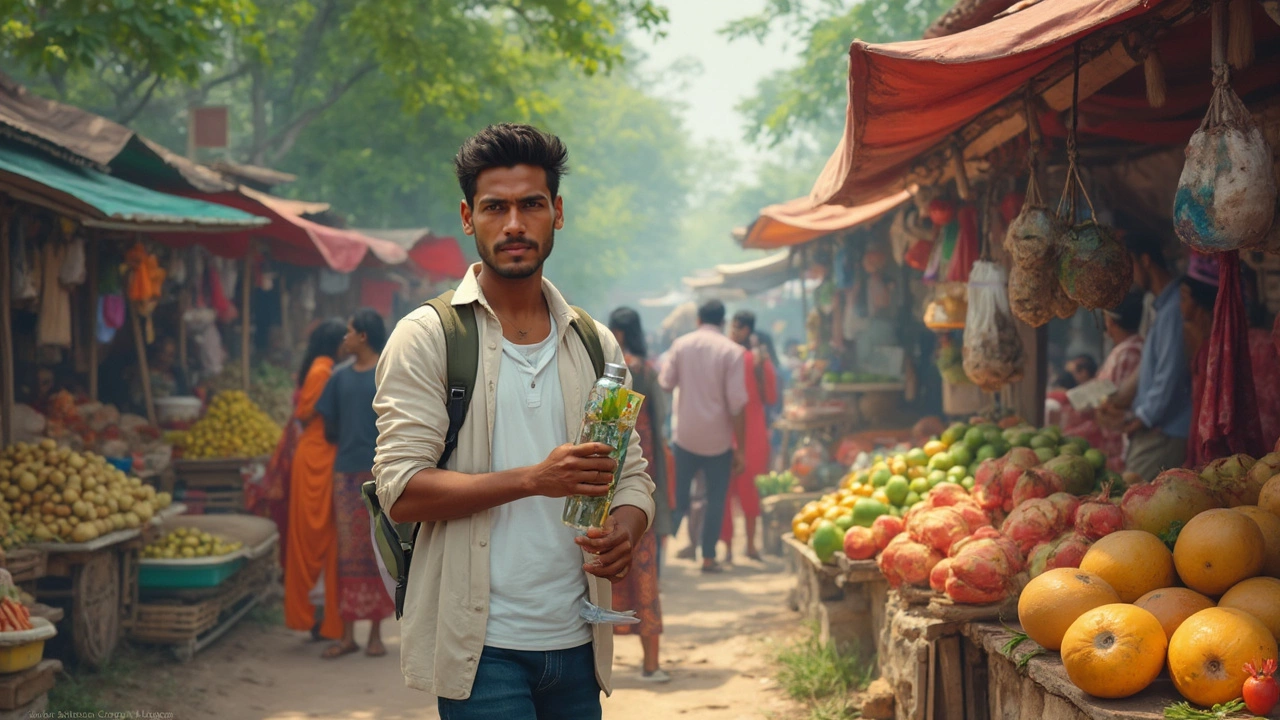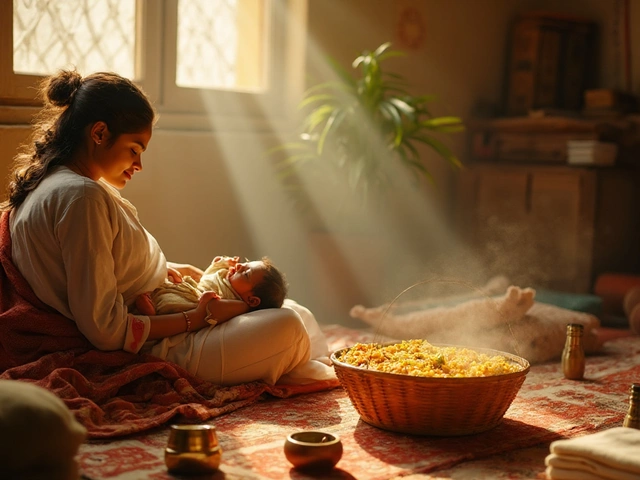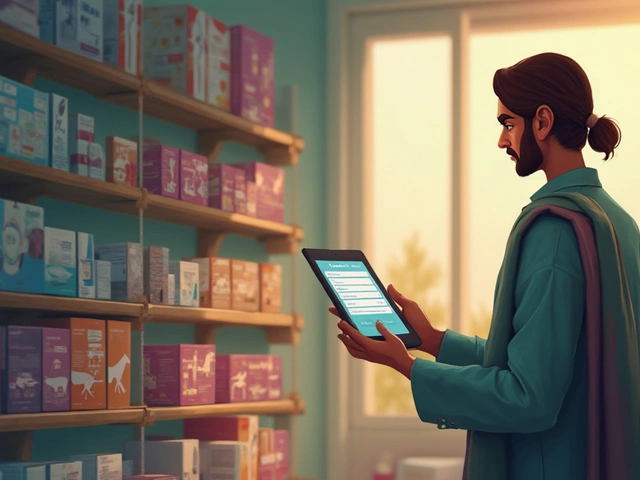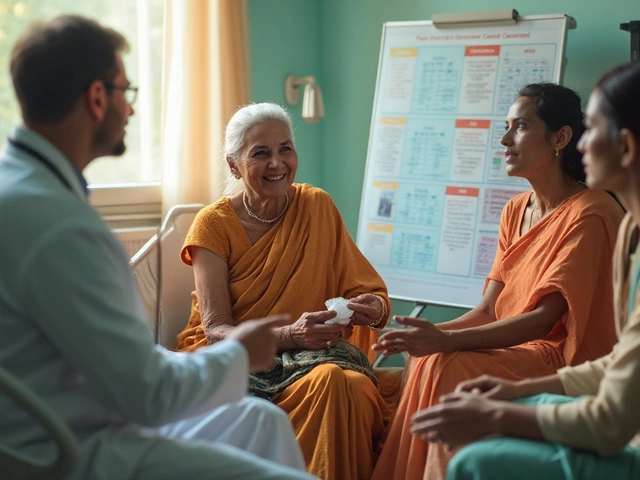
Forget fancy supplements and miracle cures—sometimes, the answer to better blood sugar is right in your cup. We know food affects glucose, but what you drink can move the needle just as much. The trick is knowing which drinks help and which ones secretly sabotage your efforts.
Loads of folks with diabetes wonder if there's something specific they can sip that actually lowers blood sugar. Good news: you don’t need rare ingredients or anything pricey. The best options are often super simple and easy to work into your day. Ready for some practical choices that might surprise you?
- Why Drinks Matter for Blood Sugar
- Top Choices: What Actually Works
- The Truth About Fruit Juices and Sweetened Drinks
- DIY Drinks: Easy Recipes at Home
- Tips for Sipping Smart Every Day
Why Drinks Matter for Blood Sugar
Most people think only about food and medication when they're trying to control blood sugar, but drinks can be game-changers too. Here’s why: liquids get absorbed faster than solid foods. That means if you grab the wrong drink, like a soda or a sweet tea, your blood sugar can shoot up in no time.
Now, the flipside—making smarter drink choices can actually help smooth out those glucose spikes. Water is the gold standard. If you're even a little bit dehydrated, your blood sugar gets harder to manage, so plain water actually helps your body flush out excess glucose more efficiently.
But it's not just about water. Drinks like herbal tea, black coffee (without sugar), and even some kinds of milk can make a difference. Too much caffeine or adding syrups, sugar, or cream, though—those can swing things in the wrong direction.
Here’s a reality check with numbers:
| Drink | Typical Sugar Content per 250ml | Blood Sugar Impact |
|---|---|---|
| Regular Soda | ~27g | Big spike |
| Unsweetened Tea | 0g | None |
| Orange Juice | 20-25g | Spike |
| Water | 0g | None |
The lesson here? What’s in your glass counts just as much as what's on your plate. If you’re trying to keep blood sugar and diabetes under control, it pays to watch what you drink—maybe even more than you thought.
Top Choices: What Actually Works
Let's cut to the chase—when it comes to lowering blood sugar, a few healthy beverages rise above the rest. You don’t need a health food store membership or a barista’s skill set. Just check your kitchen.
- Water: Old-school, but unbeatable. Water helps flush extra sugar through your kidneys. It also fills you up and keeps you from reaching for sugary sodas or juices. When you’re dehydrated, blood sugar climbs. Keep a bottle nearby and sip all day.
- Unsweetened tea: Black, green, or herbal—these all work if you skip the sugar. A study from 2023 found that people who drank green tea daily saw a small but steady drop in fasting glucose over six months. Tea contains antioxidants that may boost your body’s response to insulin.
- Black coffee: Yep, you can still have coffee—just don’t load it with sugar or sweet creamers. Research shows that regular black coffee (without extras) won’t spike your blood sugar, and some studies link it to improved glucose metabolism, at least for most people. If it makes you jittery, try half-caf or decaf.
- Vegetable juice: Not all juices are created equal. Tomato juice (no added sugar) and green veggie blends are low in carbs and won’t send your glucose soaring. Just check the label for sodium and skip if there’s extra sugar.
Here’s a quick reference to compare popular diabetes drinks at a glance:
| Drink | Sugar (per 250ml) | Effect on Blood Sugar |
|---|---|---|
| Water | 0g | Lowers/Neutral |
| Unsweetened Tea | 0g | Lowers/Neutral |
| Black Coffee | 0g | Neutral/Possible Benefit |
| Vegetable Juice (unsweetened) | 2-5g | Low Impact/Neutral |
| Orange Juice | 20g+ | Raises |
Skip anything that has added sugars or says “fruit drink” or “nectar.” Those are code for high sugar, and they’ll spike your levels in no time.

The Truth About Fruit Juices and Sweetened Drinks
Let’s talk straight—if you’re banking on fruit juice or store-bought sweet drinks to help you lower blood sugar, you’re not doing your body any favors. Even 100% fruit juice, which seems healthy, delivers a quick punch of sugar straight into your bloodstream. That can spike your blood sugar fast, which is the opposite of what you want if you're living with diabetes.
For example, a regular glass (about 240ml) of orange juice packs roughly 23 grams of sugar. Compare that to a whole orange, and you’ll see the difference: the fruit has fiber, which slows sugar absorption, but the juice just rushes it in.
| Beverage | Sugar (per 240ml) | Fiber |
|---|---|---|
| Orange Juice | 23g | 0g |
| Apple Juice | 24g | 0g |
| Cola | 26g | 0g |
And it’s not just fruit juices. Sports drinks, sodas, “vitamin” waters, and those brightly colored energy drinks may look innocent, but check the label. You’ll spot high sugar counts and zero fiber almost every time. These drinks just make blood sugar control tougher for anyone, with or without diabetes.
- Fruit juice is not a diabetic-friendly swap for whole fruit. You lose the fiber and most of the helpful vitamins hurt by processing.
- Diet sodas might seem like a safer bet, but some research hints that artificial sweeteners can mess with your body's insulin response over time. More studies are in the works, but it’s something to keep in mind.
- If you’re truly craving juice, try watering it down—half juice, half water—or even better, add some squeezed lemon or lime to your water. You’ll get flavor without the sugar bomb.
Bottom line: For steady blood sugar control, skip the sweetened drinks and focus on water, herbal teas, or unsweetened seltzers. These keep you hydrated without spiking your blood sugar, and they’re much easier on your body in the long run.
DIY Drinks: Easy Recipes at Home
If you’re tired of sipping plain water but still want to control your blood sugar, you have a ton of easy options to make at home. No need for anything fancy—just grab a few ingredients you probably already have.
- Cinnamon Water: Cinnamon isn’t just for toast. Studies show adding a small stick or a teaspoon of ground cinnamon to a pitcher of water, letting it sit overnight, can help keep blood sugar steadier. Pour over ice and drink throughout the day.
- Lemon and Ginger Water: Squeeze half a lemon and grate a thumb-sized piece of ginger into water. This simple combo is refreshing and may help your body use insulin better, according to some research done at the University of Sydney.
- Apple Cider Vinegar Tonic: Mix one tablespoon of apple cider vinegar in a big glass of water. Drink before meals. One well-known study from Arizona State University found that folks who did this had a gentler rise in blood sugar after eating.
- Unsweetened Green Tea: Brew a cup of green tea and let it cool or serve it hot. No sweetener needed. Green tea is loaded with antioxidants that support blood sugar control. Aim for two cups a day—the effect stacks up over time.
- Sparkling Water with a Twist: Swap sugary sodas for sparkling water. Add slices of cucumber, berries, or a splash of lime juice for flavor. This keeps things interesting without spiking blood sugar.
If you want to see how different drinks stack up sugar-wise, here’s a quick rundown comparing what’s in your homemade options versus a regular soda:
| Drink | Grams of Sugar (per 250ml) |
|---|---|
| Cinnamon Water | 0g |
| Lemon & Ginger Water | <1g |
| Apple Cider Vinegar Tonic | 0g |
| Unsweetened Green Tea | 0g |
| Sparkling Water (plain) | 0g |
| Regular Soda | 27g |
Keeping your fridge stocked with one or more of these no-sugar drinks means you’re less likely to reach for something that’ll push your blood sugar up. Experiment until you find a mix you actually enjoy—managing diabetes doesn’t mean your drinks have to be boring.

Tips for Sipping Smart Every Day
Managing blood sugar control means making tiny, smart choices all day, not just at mealtime. Drinks are no different—they add up, for better or worse. Here’s how you can make every sip count when you have diabetes.
- Go for water first. It hydrates, flushes excess glucose, and keeps your body running smooth. If you need flavor, add some lemon or cucumber—for taste, not sugar.
- Watch coffee and tea habits. Both are fine black or with a little milk, but skip the sugar or syrup. An American Diabetes Association (ADA) review found plain coffee may even help prevent type 2 diabetes, but only without sweet add-ins.
- Read labels on packaged drinks. 'No added sugar' isn’t the same as 'zero sugar.' Look at the nutrition facts, not the marketing. That iced tea? Some bottles have as much as 35g of sugar—almost nine teaspoons—in a single serving.
- Portion your portions. If you can’t dodge juice or milk, stick to small amounts and drink them with food to slow sugar spikes.
- Make your own blends. Homemade unsweetened iced teas, fruit-infused water, or a basic veggie smoothie are safer bets than buying random 'health' drinks at the store.
“For those aiming to manage diabetes, beverages should be chosen just as thoughtfully as food. Even drinks labeled as ‘natural’ can contain high levels of sugar.” – American Diabetes Association
If you’re curious about how calories and sugars stack up, check out this quick snapshot. Sometimes, seeing the numbers is a reality check:
| Drink | Sugar per 8oz (g) | Calories |
|---|---|---|
| Water | 0 | 0 |
| Unsweetened tea | 0 | 2 |
| Bottled lemonade | 27 | 120 |
| Regular soda | 26 | 100 |
| Orange juice | 21 | 110 |
Remember: most folks drink more than 8 ounces at a time, so those numbers climb fast. Simple swaps make a huge difference without you feeling deprived. Get in the habit of checking the details, and your future self will thank you.





Rohan Talvani
I am a manufacturing expert with over 15 years of experience in streamlining production processes and enhancing operational efficiency. My work often takes me into the technical nitty-gritty of production, but I have a keen interest in writing about medicine in India—an intersection of tradition and modern practices that captivates me. I strive to incorporate innovative approaches in everything I do, whether in my professional role or as an author. My passion for writing about health topics stems from a strong belief in knowledge sharing and its potential to bring about positive changes.
view all postsWrite a comment